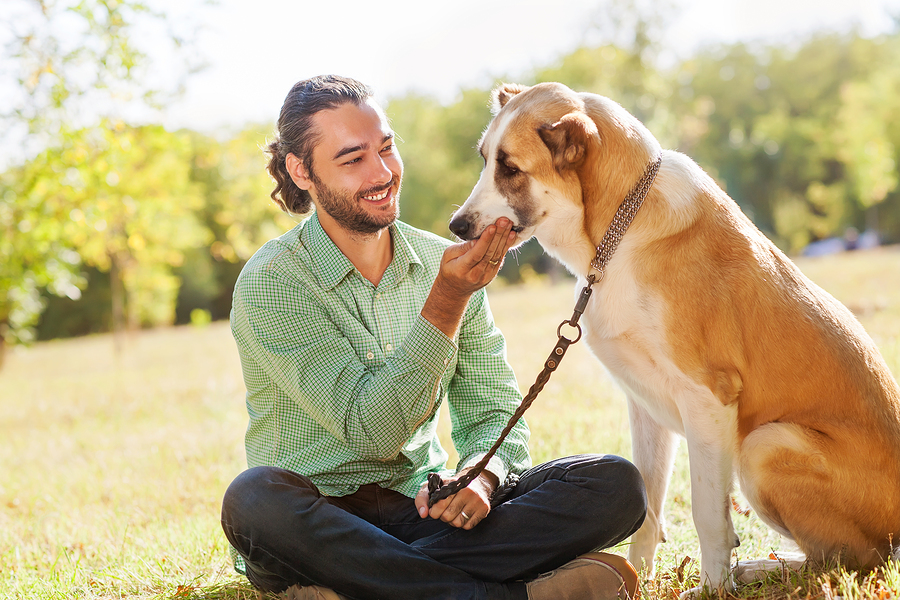PTSD in Dogs
When most people think of Post-Traumatic Stress Disorder, or PTSD, veteran soldiers might come to mind or perhaps someone who has experienced a bad car accident or a natural disaster. The reality is that people are not the only ones capable of having this anxiety disorder; animals experience it as well.

PTSD is an anxiety disorder or change in behavior following a stressful event; therefore, anything deemed stressful by an animal has the potential for creating a stress disorder.
“A severe thunderstorm, a natural disaster (flood earthquake, tornado, etc.), gunfire, war, bombings, abuse, and attacks by other dogs are just a few known events that have caused PTSD in dogs,” said Dr. Dorothy Black, clinical assistant professor in emergency and critical care at the Texas A&M College of Veterinary Medicine and Biomedical Sciences.
Many people may come into contact with dogs that display symptoms of this disorder. The old saying “let sleeping dogs lie” should apply as more than just a saying when dealing with most any dog that one is unfamiliar with, but especially if the dog is experiencing PTSD.
“The most common behavior changes seen are fear, shaking, shying away from people (including those they know), hiding, urinating when greeted, inappropriate elimination (in the house, on a bed, etc.), howling or barking, and/or aggressive behavior,” explained Black.
It is important to remember that these animals have been wronged in some way whether intentionally or not and should not receive harsh punishment or harmful reactions from a person when the animal displays these unwanted or odd behaviors. Sadly, this is why some dogs that show up in animal rescue centers or shelters are not allowed to go on and be adopted because their behaviors are seen as unfit.
However, it is possible, just as in humans, for dogs to recover and even eventually come out of this disorder.
“Each dog behaves differently and each dog follows a different course, but time, patience, and consistency will all be key in restoring your dog’s confidence,” said Black.
Black recommended seeking the help of an animal behaviorist, trainer, or veterinarian to start the healing process for your dog. These specialists can help create a plan and monitor the dog’s progress. They can help determine if your pet may benefit from medications along with behavior modification.
When people feel stressed or frazzled often times they just need a getaway for some private time, and the same applies for pets. Creating a kennel for the pet, if one does not already exist, could possibly help the pet feel safer.
“Creating a routine with set meal times, dog walks, and play time gives your pet a sense of control,” said Black, “Ultimately your goal is to desensitize your dog to situations they find stressful.”
There are many approaches to this, but all involve slow, controlled, small doses of stressful events and reinforcement of improved behavior.
Canine PTSD is very similar to PTSD in humans.
“Dogs and people display similar behaviors after traumatic events and have similar biochemical changes,” explained Black.
Interestingly, the recovery process from PTSD is also similar in humans and dogs. The relationship between man and dog can play an integral role in this, as both respond positively to that unconditional bond.
If your animal has been through something traumatic, do not assume that any odd behavior they might be displaying is permanent. Because they cannot tell us how they are feeling, it is important to take their mental health seriously and be patient with them so that hopefully the pet can regain a confident, happy, and healthy lifestyle.
ABOUT PET TALK
Pet Talk is a service of the College of Veterinary Medicine & Biomedical Sciences, Texas A&M University. Stories can be viewed on the Web at vetmed.tamu.edu/news/pet-talk. Suggestions for future topics may be directed to editor@cvm.tamu.edu.


